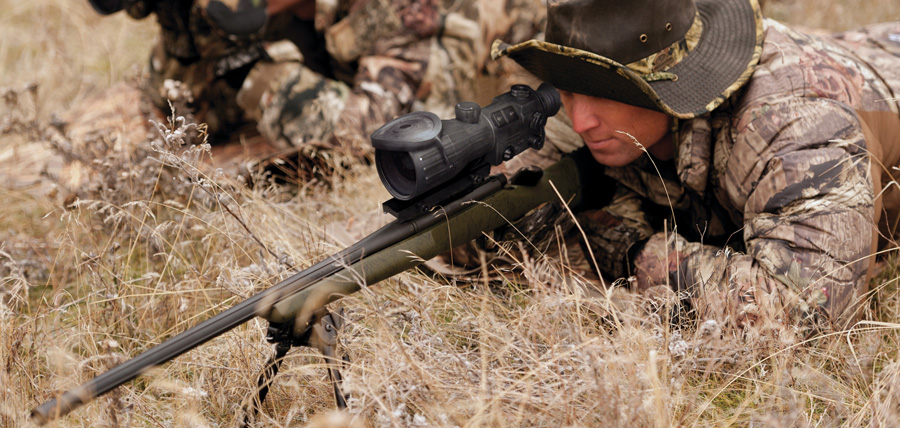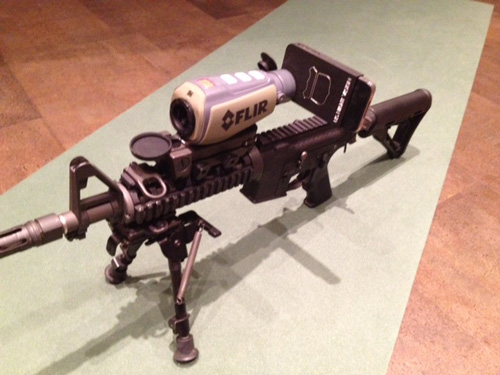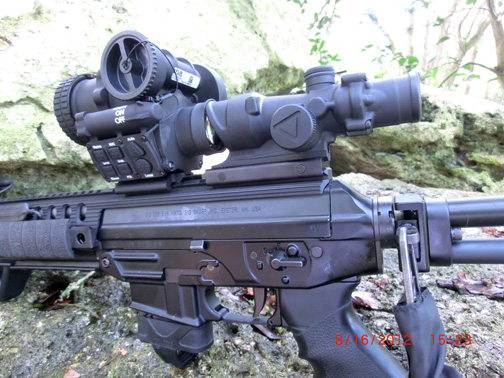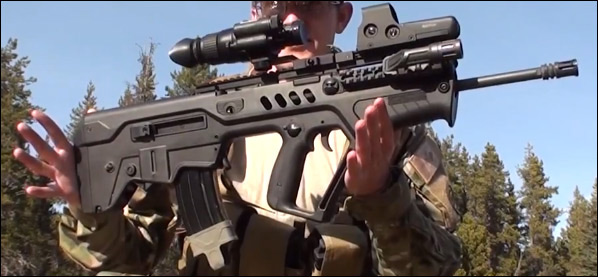Practically every hunter that buys one of our FLIR thermal night vision imagers asks this at some point. "Can I attach this to my rifle?"
Before delving into this issue its important that you check your state or provincial hunting laws. I don't know of a single state that allows you to hunt big game in the dark, but its not uncommon to hunt feral hogs, coyotes, or other varmint when the sun goes down. Its worth noting that some states ban "artificial lights" which includes I2 night vision with IR illuminators, but not FLIR devices which emit no light of any kind.
The short answer when people ask if they can put a FLIR Scout on a rifle is: No. They're not designed for that.
But the long answer is: Yes, it can be done. But its a bit of work to make that happen. There are three major issues to be addressed before putting a thermal scope onto a firearm:

All scouts are IP67 rated, which means they are totally water proof and dustproof. They've also been drop tested to 2 meters. But thats not the same as having a rifle shake them around. Any damage that results from attaching a FLIR unit to a firearm will not be covered under warranty. That's the risk you take.
The way to counter this is to use a lower recoil firearm. Personally, I would never mount a FLIR unit on my .338 lapua or any other large caliber that would likely shake it to pieces. But for varminting, I could see a .223 or rimfire rifle working just fine.
The larger BTS and TS scouts are too large to conveniently fit on a rifle, but the PS and LS hand held units aren't any heavier than a regular night vision monocular, and use the same tripod mount as the larger units. This standard 1/4-20 thread is common to almost all tripods and cameras, but finding an adapter to fit picatinny rail can be tricky.
Some night vision companies make mounts specific to their different devices.
Those can be adapted to fit a FLIR unit, but there are some more universal options that offer flexibility. One user who adapted his PS32 Scout to fit on an AR-15 rifle used a robust Elcan scope mount and drilled a section of 1/4-20 thread through it. That project lets him anchor down the FLIR unit quite firmly, and makes for a quick detach to remove the unit from the rifle.
Ashbury Precision Ordnance also makes a unit that transitions from a 1/4-20 thread to a picatinny mount, although it is designed to hold a laser rangefinder. While this unit is rather expensive, it has the added feature of allowing you to adjust your FLIR for windage and elevation. That becomes important when we tackle our third obstacle:

FLIR makes a whole line of weapon sights, but units like that are generally only available to the military and cost upwards of $12,000 per scope. Even those are designed to operate in conjunction with a primary optic, looking something like this very nice setup here:

But that imager, scope, rifle combination is at a very high price. For those of us just trying to get the basics to work, there's a real question of how to get crosshairs to appear inside. With traditional night vision its not uncommon to run the amplifier behind your rifle sight, like on this TAR-21 Tavor:

But that doesn't work with FLIR, because its detecting heat, not amplifying light. Instead the only way to get a crosshair with a thermal image is to have your scope "look into" the screen of the imager. I would use a 1-4 power scope, preferably with some kind of parallax adjustment, and then keep that set at whatever power gave you the best view of the thermal image. Between the parallax adjustment, reticule focus, and image focus on the FLIR unit itself, you should be able to get a workable image. Of course this is not like a military Day-Night system where you can pop the imager on and off without affecting your zero.
Any rifle mounted with a Scout style imager in front of its scope will have to be very carefully zeroed to make sure your point of aim is actually your point of impact. One of the things that can help here is if your mount has an elevation and windage adjustment like the Ashbury mount. That way you can adjust both the image and your scope to try to make zeroing easier.
If you can meet those three things, you're good to go! Ready to hunt hogs or coyotes, or compete in a night-time target shoot.